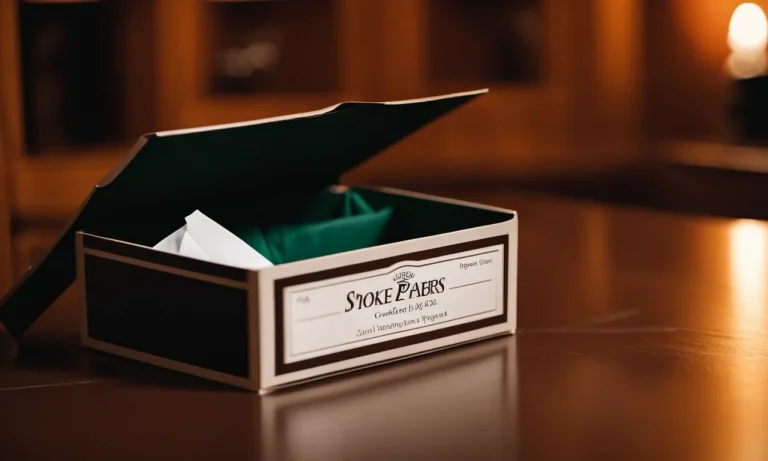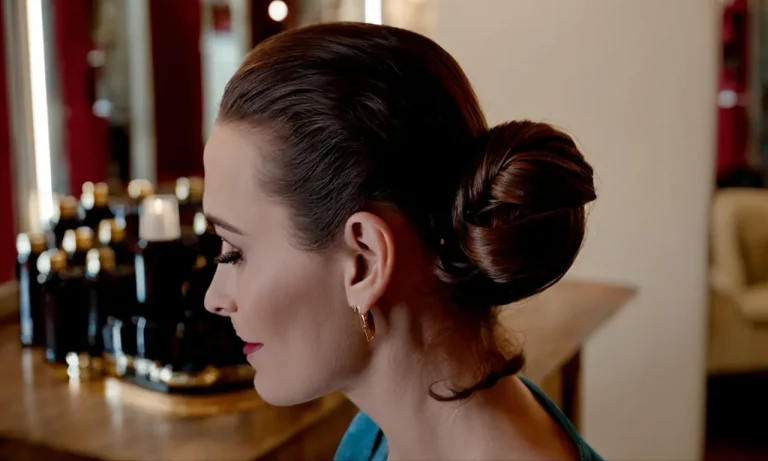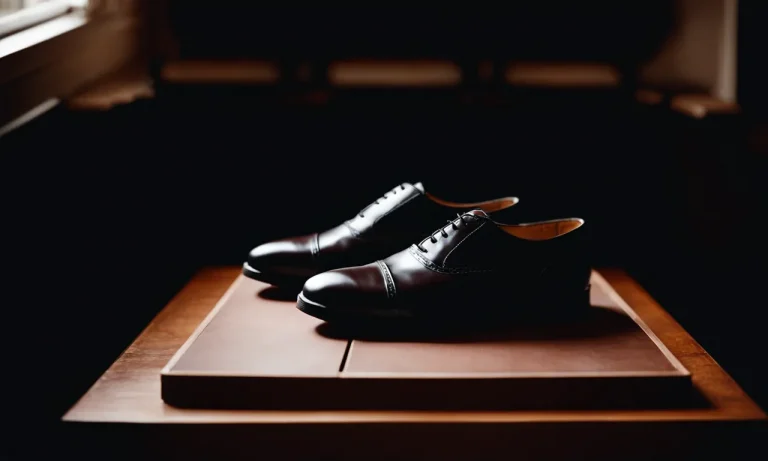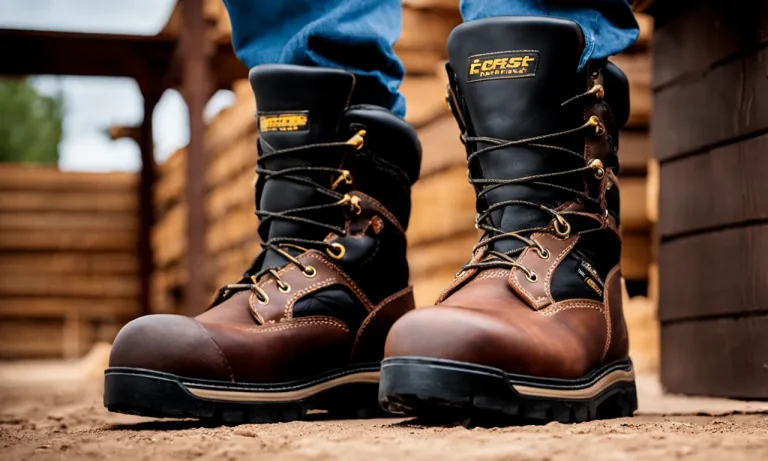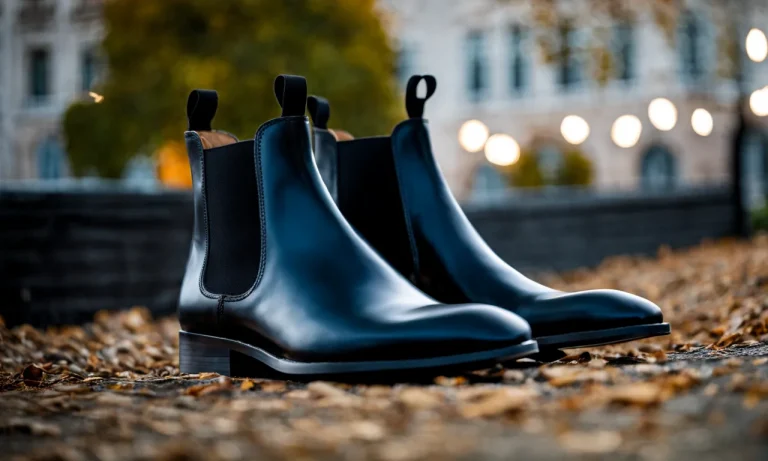Are your ring size and shoe size related? This is a common question for people shopping for rings or shoes as gifts. The short answer is that while your ring size and shoe size may correlate, there is no definitive formula to calculate one from the other.
In this comprehensive guide, we will explore the connection between ring size and shoe size in detail. We’ll look at whether there is any scientific relationship, factors that influence each size, general trends, and tips for estimating ring size from shoe size when needed.
What the Research Says on Ring Size and Shoe Size
When it comes to the relationship between ring size and shoe size, several studies have been conducted to examine any possible correlation. While these studies have found some connection between the two, it is important to note that there is no exact formula that can accurately predict a person’s ring size based on their shoe size, or vice versa.
Studies find some correlation but not an exact formula
Research has shown that there is a loose correlation between ring size and shoe size. Some studies have found that people with larger shoe sizes tend to have larger ring sizes, and vice versa. However, the correlation is not strong enough to establish a precise formula or ratio that can be universally applied.
For example, a study published in the Journal of Body Image and Eating Disorders found that there was a positive correlation between shoe size and ring size in women, but the relationship was not strong enough to accurately predict ring size based on shoe size.
The study concluded that other factors, such as individual body proportions and genetics, also play a significant role in determining ring size.
Possible reasons for loose correlation
There are several possible reasons for the loose correlation between ring size and shoe size. One reason could be the variation in body proportions among individuals. People with larger feet may have larger hands, leading to a larger ring size.
However, this is not always the case, as other factors, such as bone structure and overall body size, can also influence ring size.
Additionally, the fit of a ring and a shoe can vary significantly. While shoe size is typically measured using standard measurements, such as length and width, ring size is determined by the circumference of the finger.
The shape and thickness of a person’s fingers can greatly affect the fit of a ring, making it difficult to establish a precise correlation with shoe size.
Other factors that influence ring and shoe size
It is important to note that ring size and shoe size are influenced by various other factors. Age, weight, and hormonal changes can all impact the size of a person’s fingers and feet. Weight gain or loss, pregnancy, and medical conditions such as arthritis can also affect ring and shoe size.
Furthermore, different countries and regions may have different sizing systems for rings and shoes, adding to the complexity of establishing a direct correlation. It is always recommended to consult a professional jeweler or shoe fitter who can accurately measure and determine the appropriate size for an individual.
General Trends in Ring Size and Shoe Size
When it comes to understanding the relationship between ring size and shoe size, there are several general trends that can be observed. These trends can provide valuable insights into the correlation between these two measurements and offer interesting information for both jewelry and footwear enthusiasts.
Women’s Ring Size and Shoe Size
For women, there is often a correlation between ring size and shoe size. Studies have shown that women with larger shoe sizes tend to have larger ring sizes as well. This can be attributed to the fact that both measurements are influenced by similar factors, such as body size and weight distribution.
It’s important to note that this correlation is not always exact, as individuals’ body proportions can vary. However, on average, women with larger shoe sizes can expect to have slightly larger ring sizes compared to women with smaller shoe sizes.
Men’s Ring Size and Shoe Size
Similar to women, men also exhibit a correlation between ring size and shoe size. However, the relationship may not be as strong as it is for women. This is because men’s body proportions and weight distribution tend to differ from women’s, leading to variations in ring and shoe sizes.
While it is difficult to pinpoint an exact relationship between men’s ring size and shoe size, it is generally observed that men with larger shoe sizes tend to have slightly larger ring sizes. However, there can be significant variations within this trend, so it is always recommended to measure ring size accurately before making a purchase.
Differences across Geographic Locations and Ethnicities
Geographic locations and ethnicities can also play a role in the relationship between ring size and shoe size. Studies have shown that certain populations may exhibit different average ring and shoe sizes compared to others.
For example, individuals from regions with colder climates often have larger shoe sizes due to the need for thicker socks and insulation. This can also affect their ring size, as the fingers may be slightly larger to accommodate the wider footwear.
On the other hand, individuals from warmer climates may have smaller shoe sizes and, consequently, smaller ring sizes.
Additionally, ethnicities can also influence ring and shoe size. Certain ethnic groups may have genetic factors that contribute to variations in body proportions, including finger and foot size. This can result in different average ring and shoe sizes across different ethnicities.
It’s important to remember that these trends are general observations and may not apply to every individual. Factors such as personal preference, lifestyle, and weight fluctuations can also influence ring and shoe size.
Therefore, it is always recommended to get professionally measured when purchasing jewelry or footwear.
Tips for Estimating Ring Size from Shoe Size
Estimating ring size can be a tricky task, but did you know that your shoe size can be a helpful starting point? Here are some tips for estimating ring size based on shoe size:
Using shoe size as a starting point
Believe it or not, there is actually a correlation between shoe size and ring size. While it may not be an exact science, it can provide a rough estimate. In general, people with larger shoe sizes tend to have larger hands and fingers, and vice versa.
So, if you have a general idea of someone’s shoe size, it can give you a starting point for estimating their ring size.
For example, if someone wears a size 9 shoe, they will likely have a larger ring size than someone who wears a size 6 shoe. Keep in mind that this is just a general guideline and individual variations can occur.
Adjustments based on factors like hand size
While shoe size can give you a rough estimate of ring size, it’s important to consider other factors as well. Hand size, for instance, can play a significant role in determining the appropriate ring size.
Someone with larger hands may need a slightly larger ring size, even if their shoe size suggests otherwise.
Additionally, the width of the ring band can affect the fit. Wide bands may require a slightly larger size compared to narrow bands. It’s also worth noting that certain styles, such as stackable rings, may fit more snugly and may require a smaller size than a traditional ring.
When to get an exact measurement
While estimating ring size from shoe size can be helpful, there are times when getting an exact measurement is crucial. If you’re planning to purchase an engagement ring or any piece of fine jewelry, it’s highly recommended to get an accurate ring size measurement.
This will ensure a perfect fit and prevent any disappointment.
There are various methods for measuring ring size, including using a ring sizer tool or visiting a professional jeweler. These methods provide a precise measurement and take into account factors such as finger shape and personal preference.
Remember, using shoe size as a starting point for estimating ring size can be a fun and useful tool, but it’s important to consider other factors and get an exact measurement when necessary.
Taking Other Measurements for Ring Size
Professional ring size measurement
When it comes to determining your ring size, it is always best to seek professional help. Jewelers have the expertise and tools to accurately measure your finger size. They use a set of metal or plastic rings known as ring sizers to find the perfect fit.
By trying on different sizes and shapes, they can determine the most suitable ring size for you. Professional ring size measurements are considered the most accurate and reliable method.
DIY methods for measuring finger size
If you can’t make it to a jeweler, there are several DIY methods you can try at home to measure your finger size. One popular method is using a piece of string or paper to wrap around your finger and mark the spot where it overlaps.
Then, using a ruler, measure the length from the starting point to the marked spot. This measurement can be compared to a ring size chart to determine your ring size.
Another DIY method involves using a printable ring sizer. Many online jewelry retailers offer printable ring sizers that you can download and print at home. These templates usually consist of a strip of paper with markings indicating different ring sizes.
Simply cut out the strip, wrap it around your finger, and find the size that fits snugly without being too tight or loose.
Converting measurements to ring size
Once you have obtained your finger measurement, whether through a professional or DIY method, you will need to convert it to a ring size. Different countries and jewelry manufacturers may have varying sizing standards, so it is important to refer to a reliable ring size conversion chart.
These charts typically provide the corresponding ring sizes for different measurement units, such as millimeters or inches. Keep in mind that these charts are general guidelines, and it is always best to try on actual rings to ensure the perfect fit.
It’s worth noting that factors such as temperature, time of day, and even physical activity can affect the size of your fingers. So, it’s a good idea to measure your finger size at different times to get a more accurate average measurement.
Remember, getting the right ring size is crucial for comfort and ensuring that your ring doesn’t slip off or feel too tight. So, whether you opt for professional assistance or try a DIY method, taking accurate measurements is the first step in finding the perfect ring size for you.
Conclusion
While your shoe size may provide a ballpark estimate for ring size, there are many other factors that can affect your perfect fit. The best way to determine ring size is to get a direct measurement of the intended finger.
But armed with the information in this guide, you can make an educated guess if needed. Just be prepared to exchange for a different size if the fit is off. With some simple measuring techniques, you can find your accurate ring size and shop for stunning rings with confidence.

